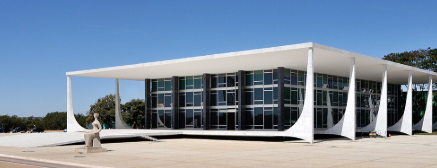
The American Dream: Fading Illusion in Contemporary Society.

The American Dream has long symbolized hope, opportunity, and prosperity.
The American Dream is the idea that anyone can succeed if they work hard, no matter their background. This idea has inspired generations of Americans and immigrants. However, in recent decades, this once-vibrant ideal has become increasingly elusive. This change has many causes, including money issues, social changes, and political problems, making the American Dream less attractive.
One of the most significant factors undermining the American Dream is the growing economic disparity in the United States.
The gap between rich and poor Americans has grown a lot, making it harder for people to move up the social ladder. A report by the Pew Research Center says the richest 1% of Americans now have more wealth than the bottom 90% combined. The concentration of wealth among a few people has made many others feel powerless.
Wages for middle and lower-income workers have stagnated over the past few decades, while the cost of living has risen. This has made it increasingly challenging for average Americans to afford necessities such as housing, healthcare, and education. The dream of homeownership, once a cornerstone of the American Dream, has become elusive. High housing prices and low wage increases mean many people are stuck renting forever or living in poor conditions.
Education and Student Debt.
Education has traditionally unlocked the American Dream. However, inequities and challenges in the current education system hinder many from reaching their full potential.
Public schools in underfunded districts often lack the resources to provide a quality education, maintaining cycles of poverty.
Moreover, the soaring cost of higher education has led to an explosion in student debt. According to the Federal Reserve, Americans owe over $1.7 trillion in student loans.
This debt makes it hard for graduates to manage their money. It also stops them from buying a home, starting a business, or saving for retirement. People are doubting that a college degree guarantees a better life because many graduates can’t find good jobs.
Healthcare and Social Safety Nets.
Access to affordable healthcare is another critical component of the American Dream that has become increasingly out of reach.
The U.S. has very high healthcare costs. Many Americans find it hard to pay for insurance, deductibles, and other medical bills. Medical debt is a leading cause of bankruptcy, further worsening Financial issues.
We have weakened the social safety nets designed to support individuals in times of need.
We have cut or restricted programs like unemployment benefits, food assistance, and housing support. This leaves many people without the help they need. Support programs are weakening. This makes it harder for people to recover from financial problems and move forward in life.
Political Separation and Frustration.

Political Separation and Frustration with the government have also contributed to the fading appeal of the American Dream. Trust in government institutions has declined, and the political landscape has become increasingly divisive. Many Americans feel that the government ignores their needs and doesn’t listen to them. This sense of oppression can lead to apathy and a lack of motivation to strive for a better future.
The influence of money in politics has further worsened this issue. Corporate interests and wealthy individuals have significant sway over policy decisions, often at the expense of the general population. This has led to policies that benefit the wealthy and powerful. As a result, financial problems have worsened and opportunities for average Americans have become more limited.
Changing Demographics and Cultural Shifts.

The demographics of the United States are changing. There is more diversity in race, ethnicity, and immigration status. While diversity enriches the nation, it has also brought challenges in terms of social cohesion and acceptance. Systemic racism and discrimination continue to create barriers for many individuals, particularly people of color, in achieving the American Dream.
Cultural shifts have also influenced perceptions of the American Dream.
Technology and the gig economy have changed work. Many workers now have less job security and fewer benefits. A stable, long-term career with one employer is becoming rare. Many people are struggling to adapt to this new reality.
The American Dream, as people once envisioned it, no longer exists for many Americans. Economic disparities, education, and healthcare challenges, weakened social safety nets, political frustration, and changing demographics have all contributed to its decline. However, this does not mean that the dream is dead. We might need to reimagine it to match today’s realities and the hopes of a diverse population.
To revitalize the American Dream, systemic changes are necessary. Policies that address income inequity and offer affordable education and healthcare can help. Strengthening social safety nets and ensuring fair political representation make the dream more accessible to everyone. By updating the American Dream for today, it can become a source of hope and opportunity for future generations.




